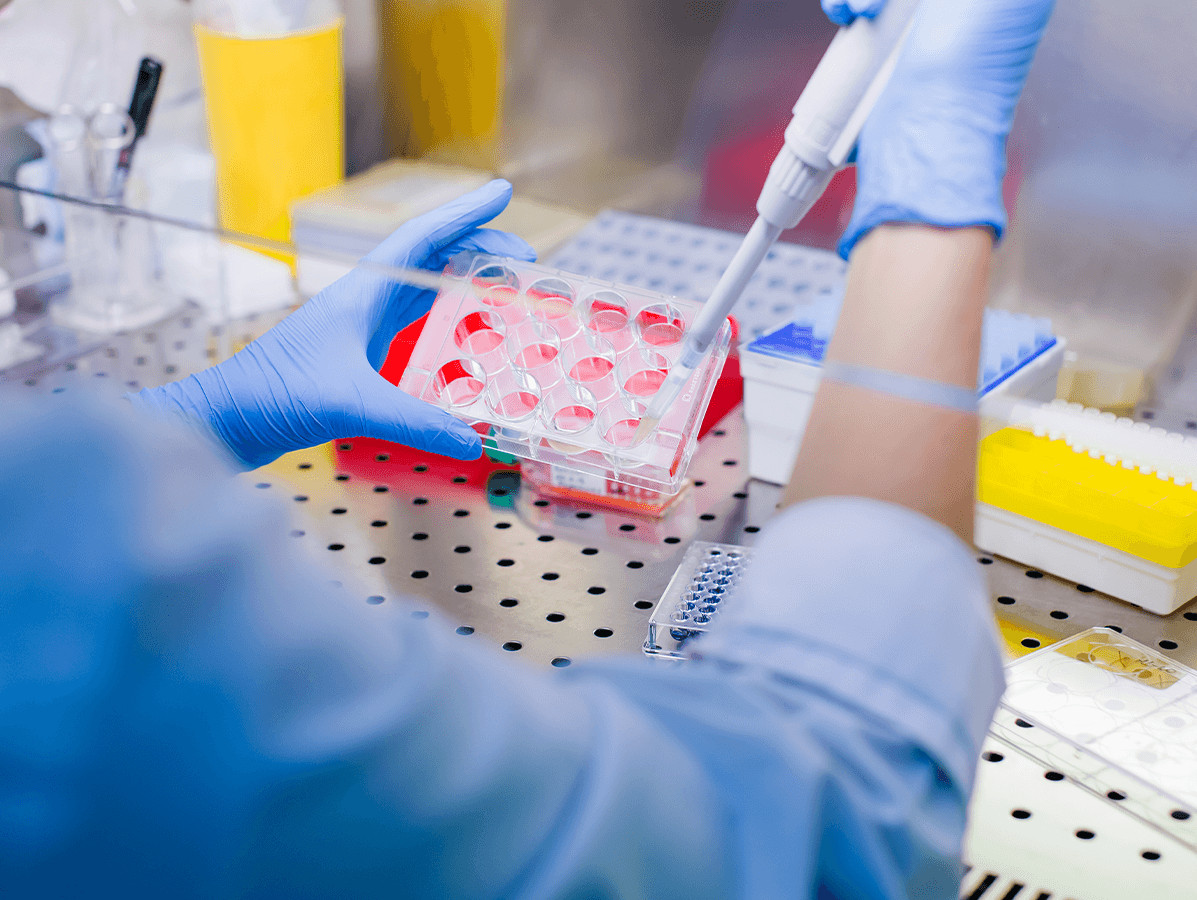
Three Wageningen research institutes are developing organoids using intestinal cells harvested from humans and pigs. This will drastically reduce the need for test animals in future, according to food safety researcher Meike van der Zande.
New food products must undergo extensive research into the safety of every ingredient before they can be put on the market. Animal tests are often required as part of the certification process. But eventually, these animal tests should no longer be necessary.
Until about 10 years ago, animal testing was much more routine as a way of measuring the effects of certain food components. It was simply the best available option. Cells could also be cultivated in a petri dish, but this was only relevant to a limited aspect of the research. There were inevitable drawbacks to both types of research. “Mice are not humans or pigs, and individual cells do not act in the same way as an entire organ. Applying the findings to the human body is often problematic,” according to Van der Zande. There are also ethical problems with the use of test animals. “Unfortunately we can’t yet eliminate animal testing altogether, but we can further reduce the number of test animals used,” she argues. Organoids are a solution to both these issues. A cluster of cells that develops into a mini version of the relevant organ is closer to the real thing and reduces the need to use test animals.
If you’re picturing an organoid as a tiny piece of intestine in a little dish, you might be disappointed. Mini-organs don’t necessarily need to look like the real thing, they just need to function in a comparable way. Van der Zande works for that reason with a complex set-up based on a thin layer of cells. A liquid form of ‘food’ flows along the top of this layer of cells, just as it would in the intestine, and ‘blood’ flows along the underside of the layer of cells. “Sensors and chips allow us to study these liquid flows at a microscopic level,” says Van der Zande. “This gives us a much closer comparison to what actually happens in the human body.” Once it’s been absorbed, a substance will continue to move around the body. “Substances are stored, expelled or broken down. We’re developing computer models for this based on knowledge drawn from previous research using human and animal tests.” Taken as a whole, this provides a good picture of the effects that healthy and unhealthy substances have on the body.
Van der Zande has noticed how her research has caught the attention of politicians and the general public. Over the past few years in particular, there’s been growing interest in finding alternatives to animal testing. However, much more research has to be done before organoids can be routinely used for certifying new food products. Still, she is optimistic that her organoids will succeed.
Image: ©Vshivkova/Shutterstock.com
Source: Wageningen University & Research